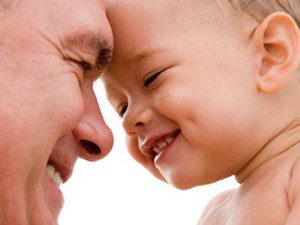According to a newly published report, A massage treatment developed for children who have autism can lessen its severity by a third in the first five months after diagnosis, making the treatment an effective early intervention.
Dr. Louisa Silva, founder of the Oregon-based Qigong Sensory Training Institute and a visiting professor at Western Oregon University developed the treatment that was found to be effective for both high- and low-functioning autistic children.
“That’s important because there are really very, very few effective research-based treatments for low-functioning children,” said Silva, who holds a medical degree from the University of California Los Angeles as well as a master’s degree in public health from the Medical College of Wisconsin.
Most autism treatments require some degree of language and ability to focus, she said. Her treatment removes those barriers by centering on a 15-minute whole-body massage. The treatment, which she trains parents to use daily with children under the age of 6, is now the subject of a two-year replication study to assess its effectiveness.
The first report on the study, published this week in the peer-reviewed journal Autism Research and Treatment, found that overall autism severity among the 103 Oregon preschoolers in the study decreased by 32 percent, resulting in improved behavior and language. Sensory problems improved by 38 percent and sensitivity to touch and texture improved by 49 percent after five months of treatment.
Autism severity is assessed by evaluating symptoms against screening tools such as the Autism Behavior Checklist.
Children in the study also experienced an 18 percent increase in receptive language, Silva said. Among low-functioning children, a lack of receptive language means “they don’t answer to their name, they don’t understand.” Among high-functioning children, she said, “it’s that they don’t listen — it’s more that they would have a monologue” instead of a conversation.
Parenting stress, a phrase Silva said refers to the difficulty of parenting autistic children because of their communication and sensory challenges, improved by 44 percent. Also notable was an improvement in parent-child bonding and interactions. Despite the fact that many parents of children with autism are highly engaged, she said, there is still evidence of bonding problems.
Silva stated, “We think that the reason for that is, there’s a problem with the sense of touch and that interferes with the child’s perception of touch and touch is the main means of bonding.”
Parents participating in the study were almost unanimously positive in their comments, which were included in the journal article:
“It has built more trust when it comes to touch.”
“He’s more aware of his body, more eye contact. Massage gives tools to help calm him. We can use the massage to get him to sleep if we need to. There is also potty training progress.”
“We’ve become closer and he’s developed a stronger bond with both his parents. His speech development has made dramatic progress. He’s using full sentences now, often to our amazement and gratitude.”
Celeste Descloux said her son used to seem oblivious to his hands and feet, almost as if he didn’t realize he had them; now he’s definitely aware of them. In addition, “He didn’t like to be held too long or touched in some parts of his body, but now he doesn’t have that problem,” she said. “He has opened up more.”
She also said his speech and language skills have blossomed in the past year though how much of that is attributable to the massage treatments and how much to his speech therapist is unclear.
“I feel like we were very lucky to be a part of the study and we’ve seen the benefits of the study,” Descloux said.
The study is now looking into whether the same results can be achieved for older children with autism.
The report noted several caveats:
Treatment results depended on how faithfully parents stuck with the massage. “Of course, if it’s not done, it doesn’t work,” Silva said, adding that she asks parents to do the massage six to seven times a week.
The children in the study did not have any additional chronic disabilities.
The children in the study were not receiving psychoactive medication or pharmaceutical chelation therapy.
The study results are strong enough to recommend the massage treatment to parents at the time autism is diagnosed, often by the age of two.
Silva declined to comment on how long the positive effects from the massage treatment could last, saying the study is not complete. But in previous studies with smaller sample sizes of 50 children, Silva said, the massage treatment continued to be effective after 10 months.
Silva has spent 14 years researching the effectiveness of Chinese-style qigong (pronounced “CHEE-gung”) massage in lessening sensory challenges for kids with autism.
“The foundation of the research is that children with autism have sensory problems which really get in the way of the parent being able to reach and teach the child,” Silva told The Oregonian/OregonLive last July. “They get in the way of the child being able to connect socially with others and learn.”
The most common sensory problem among autistic children is a problem with the sense of touch, which Silva called “the master sense.”
“When touch is abnormal, the other senses don’t work together,” she said.




